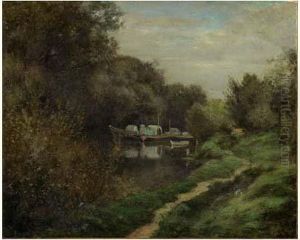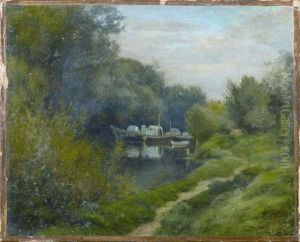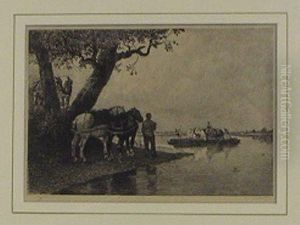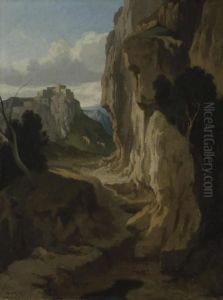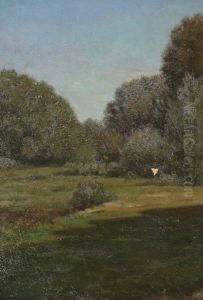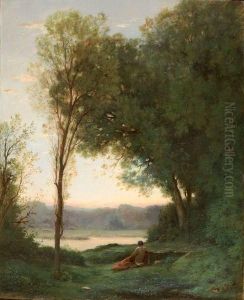Theophile Narcisse Chauvel Paintings
Théophile-Narcisse Chauvel was a French landscape painter and engraver, born in 1831 in Mortagne-au-Perche, France. His artistic career is marked by his dedication to engraving, through which he achieved notable recognition in his time. Chauvel's work often reflects the Barbizon school's influence, which emphasized naturalism and the beauty of the rural French countryside.
After receiving initial training in art, Chauvel moved to Paris to further his studies and career. He was a student of Rémond and Léon Cogniet, two prominent figures in the French art world of the 19th century. Cogniet, in particular, was known for his historical and portrait painting, and he imparted to Chauvel a strong sense of composition and attention to detail.
Chauvel became well known for his landscape engravings, which were characterized by a delicate yet precise linearity that captured the subtleties of light and texture in nature. He often worked on illustrations for books, bringing literary scenes to life with his engravings. This included work on 'L'Artiste,' a periodical which was a significant publication for French artists and writers during the 19th century. His contributions helped to disseminate the styles and ideas of the Barbizon school to a broader audience.
In 1864, Chauvel received a medal at the Salon, an official art exhibition of the Académie des Beaux-Arts in Paris. This recognition was a testament to his skill and the respect he garnered among his contemporaries. Throughout his career, he continued to exhibit his work at the Salon and other notable venues, contributing to the evolving landscape of French art during the 19th century.
Chauvel's works were not only appreciated in France but also gained international attention. He exhibited abroad and his engravings were collected by art enthusiasts in different countries, showcasing the universal appeal of his interpretation of nature.
Théophile-Narcisse Chauvel passed away in 1909, leaving behind a body of work that continues to be appreciated for its contribution to the tradition of French landscape art and engraving. His legacy lives on in the collections of various museums and in the continued study of 19th-century French art.
